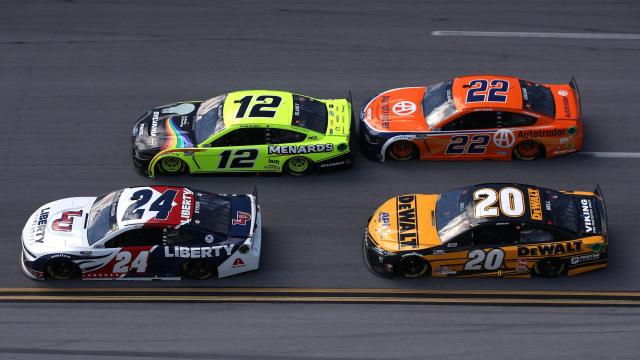The NASCAR Cup Series All-Star race has been a staple in American stock-car racing circles since it was first introduced as The Winston in 1985. It has traditionally been a celebration of winners and champions from the current and previous seasons, with a few extra folks added on recently via NASCAR Open stage wins or fan votes. But that’s not going to be the case anymore. It’s about to get a whole lot more confusing.
I am going to attempt to break down the format for the All-Star Race, which will be taking place at Texas Motor Speedway, this year. I am going to try to do it in as clear and concise a manner as I can. And I am sorry in advance if I fail at this task.
This year, the basic qualifications will remain the same. To be eligible for the All-Star Race, a driver needs to have won a points-scoring event in 2020 or 2021, won a previous All-Star Race and compete full time, or won a NASCAR Cup Series Championship and compete full time. The field will, again be filled out with winners of each segment of the NASCAR Open race, which will be run immediately before the All-Star Race.
Seventeen drivers have already clinched an All-Star Race spot: Christopher Bell, Ryan Blaney, Alex Bowman, Kurt Busch, Kyle Busch, William Byron, Cole Custer, Austin Dillon, Chase Elliott, Denny Hamlin, Kevin Harvick, Brad Keselowski, Kyle Larson, Joey Logano, Michael McDowell, Ryan Newman, and Martin Truex Jr. The winners of Stages 1, 2, and 3 of the Open will join them to make a field of 20.
The All-Star Race itself, though, is no longer just a race. It’s a six-round tournament composed of a total of 100 laps. Stay with me here.
Round 1′s starting lineup will be determined via a random draw. The race will last for 15 laps.
Part of Round 2‘s starting lineup will be inverted based on the finishing order of Round 1, but that inversion will start from eighth through 12th place; the decision of where the inversion begins will be made through a random draw. So, if the random draw decides that all the drivers from 10th place back will be inverted, that’s how it’ll be. It will last for 15 laps.
Round 3‘s starting lineup will be inverted based on the finishing order of Round 2. It will last for 15 laps.
Part of Round 4‘s starting order will again be inverted after eighth through 12th place, with the inversion point based on a random draw. It will last 15 laps.
Round 5‘s starting order will be determined based on the cumulative finish of each driver from the first four rounds. The driver with the best cumulative finish will get pole, with the second-best cumulative finisher starting second, and so on. So, pole will go to the driver with the best average finish, essentially. This round will last for 30 laps.
And since it’s a longer round, each driver is required to come into the pits for a mandatory four-tire pit stop. The crew who performs the fastest tire change will receive $US100,000 ($129,500) out of the overall prize purse.
In Round 6, things finally get simple. Cars line up based on their finishing order from Round 5. They’ll run a 10-lap sprint race to the finish. The winner of Round 6 will take home the remaining $US900,000 ($1,165,500) of the overall million-dollar prize purse and will be crowned the 2021 All-Star Race Winner.
If you’re confused, you’re not alone. Fans have been critical of the increasingly complex All-Star format for years, and it’s only getting more confusing this year, with a bunch of arbitrary races with arbitrary starting lineups determined by random draw, inversion, or mathematical equation. It’s not going to be the kind of thing you can easily follow and understand, which kind of sucks. The All-Star race is generally a really fun exhibition weekend that brings together the best drivers in the field, but there’s not as much incentive to watch if it’s going to be a massively confusing event.
Hopefully it makes more sense in practice than in theory, but I’m not holding my breath.
